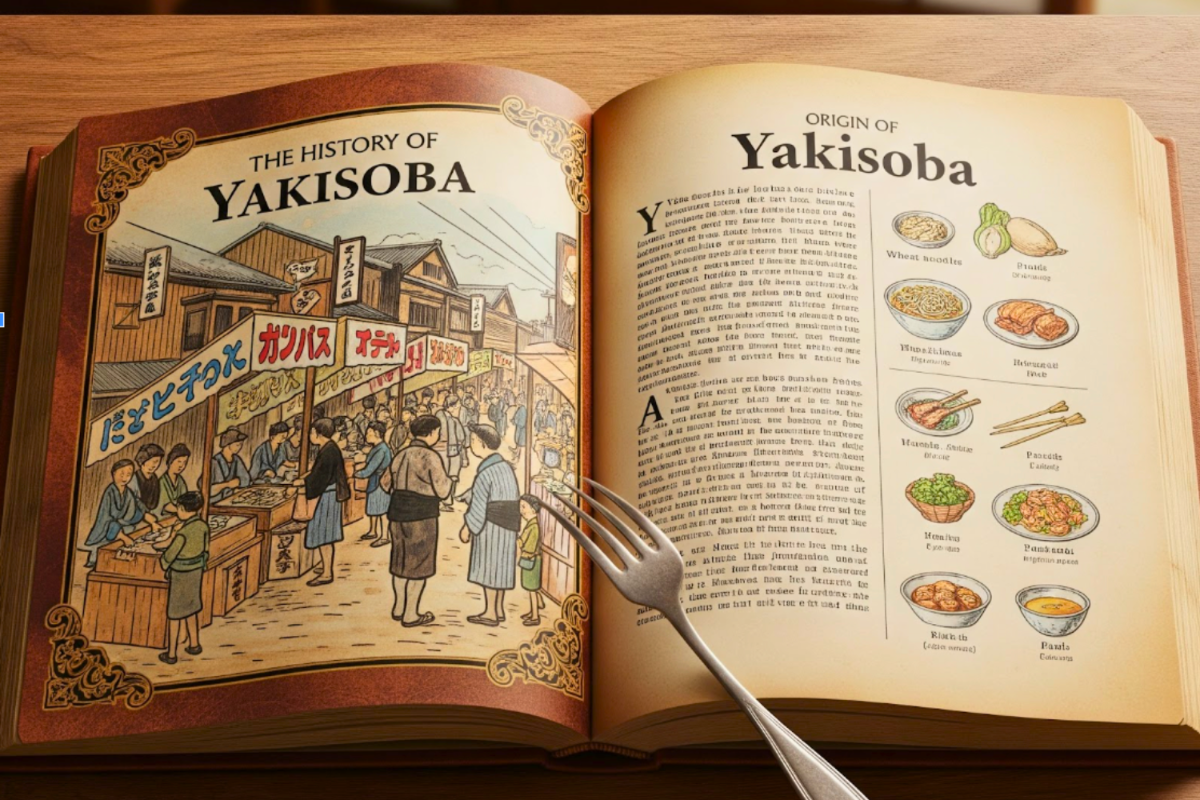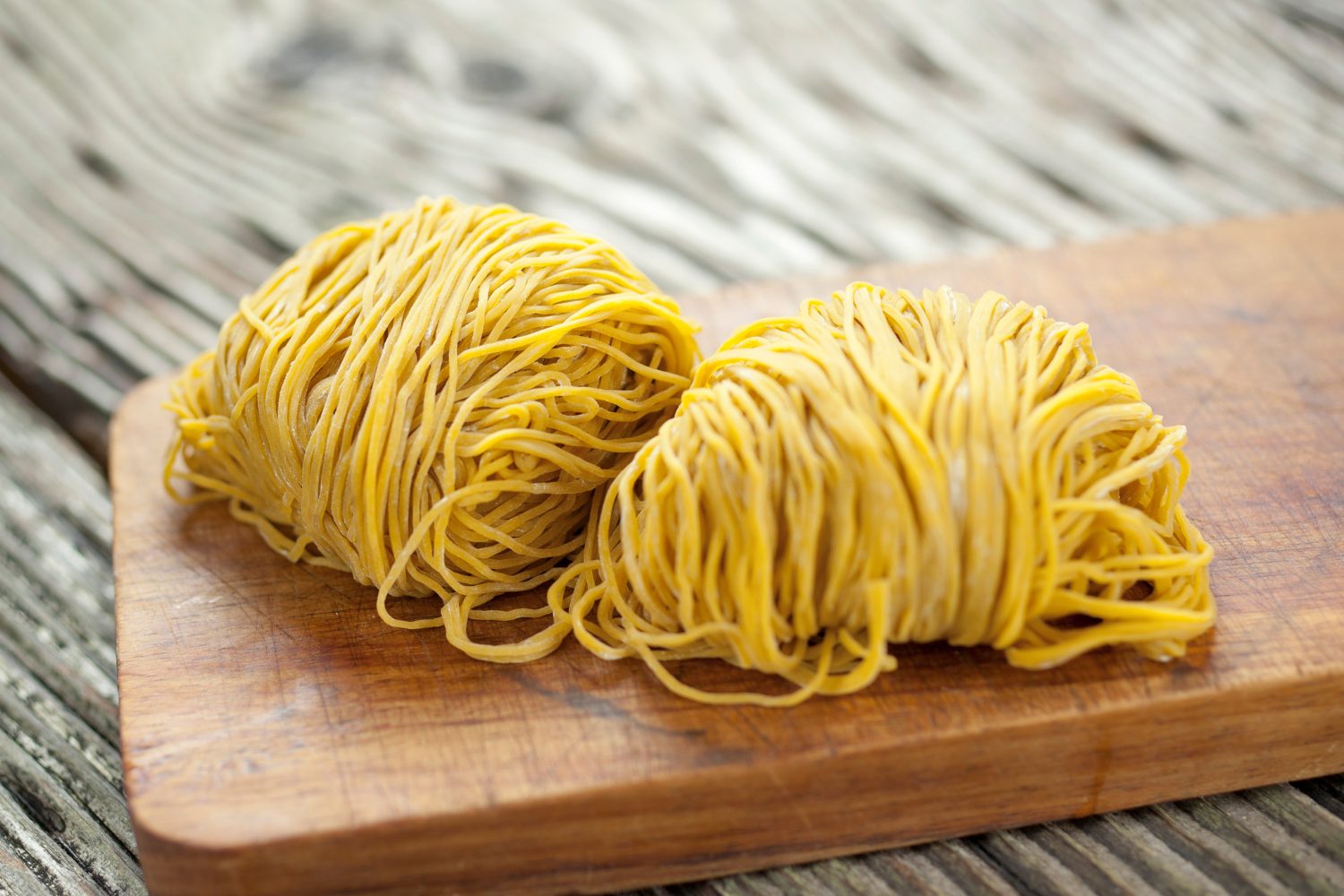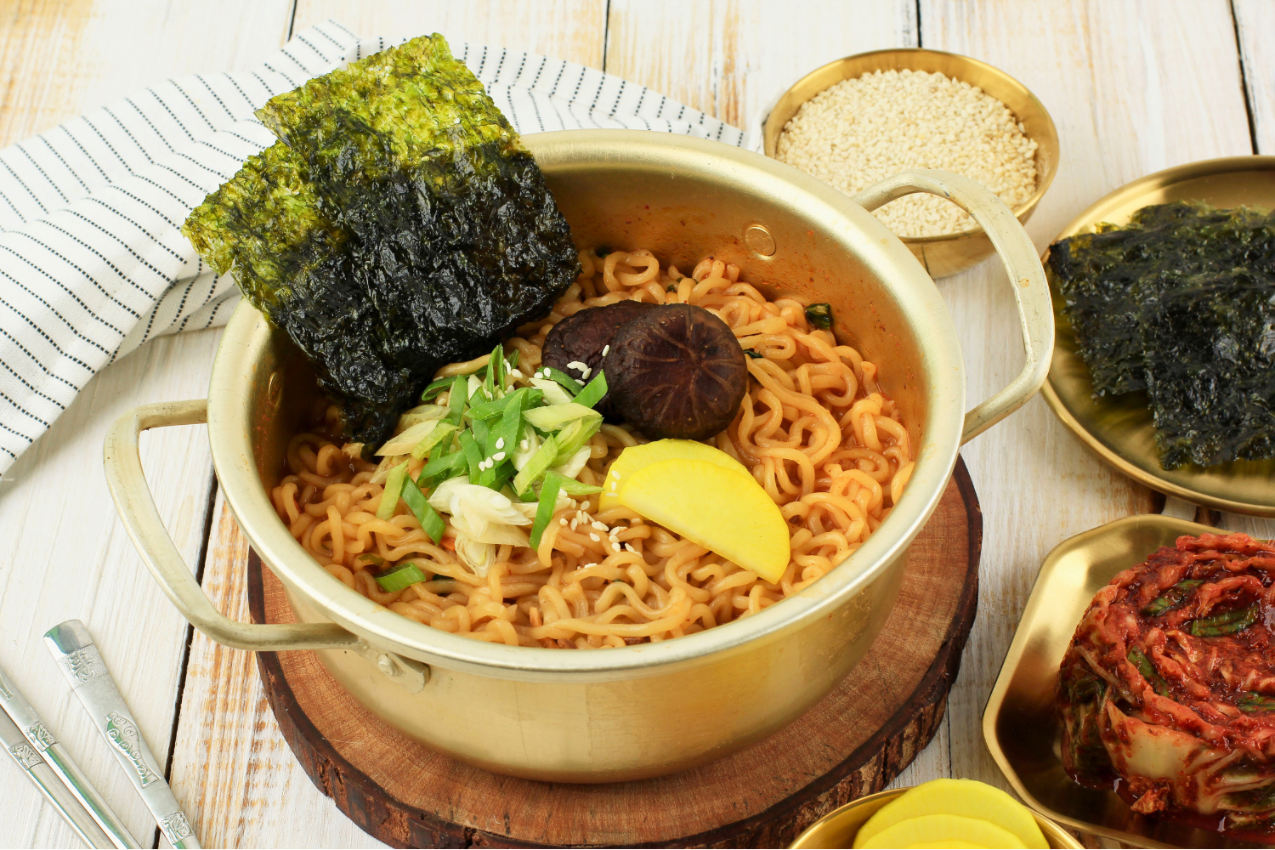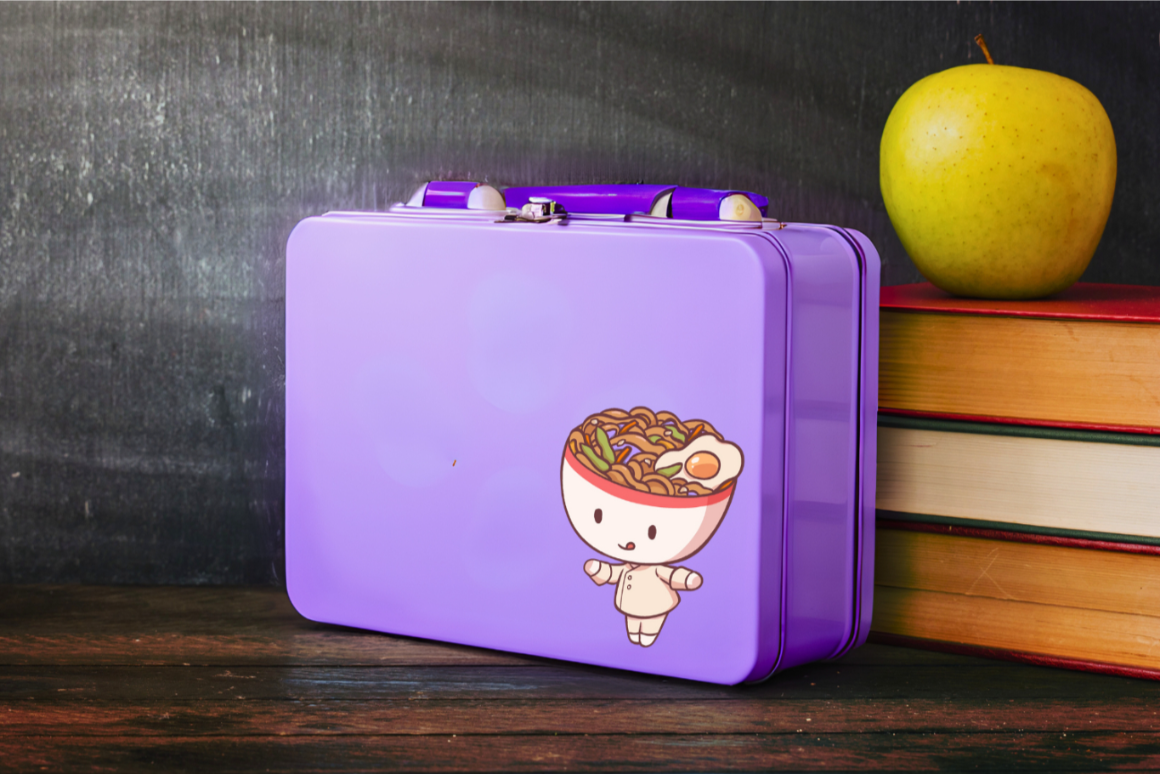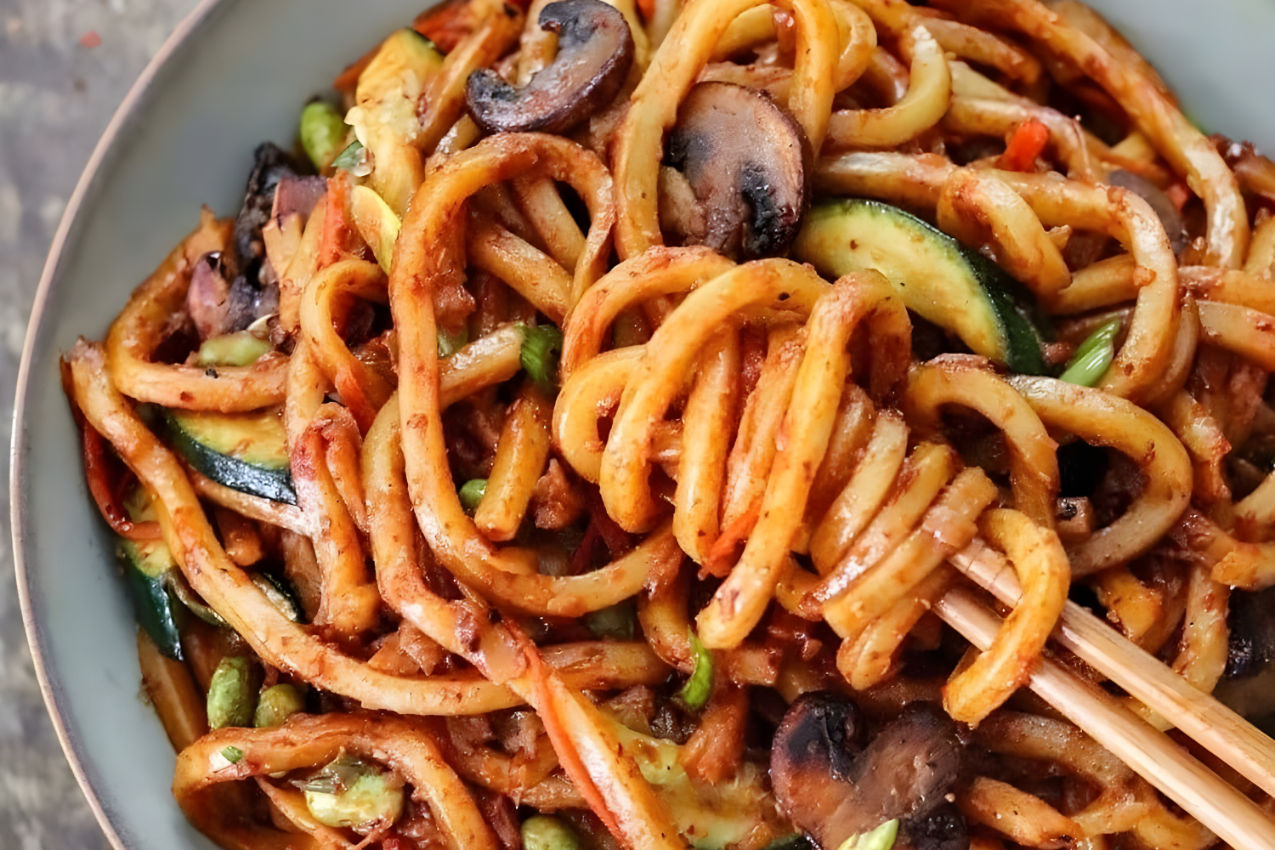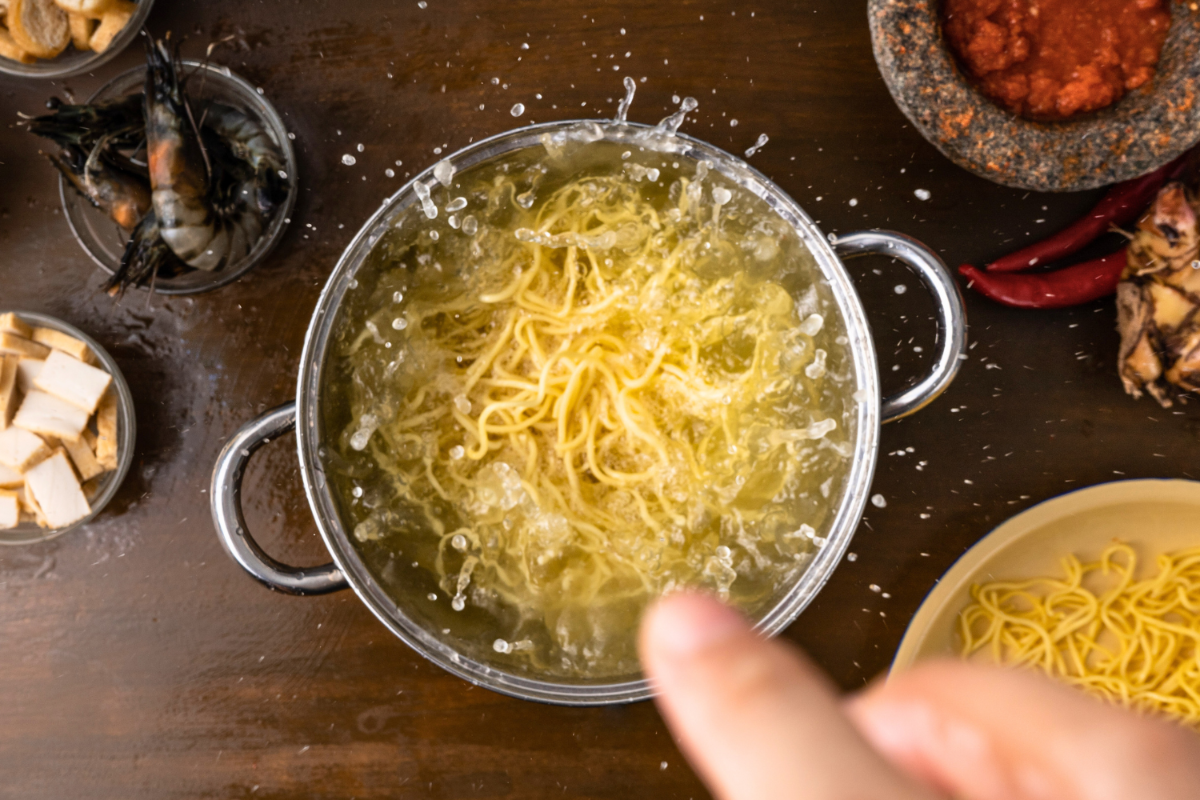The History of Yakisoba Noodles
Yakisoba, a quintessential Japanese stir-fried noodle dish, holds a special place in the hearts (and stomachs) of food enthusiasts worldwide. Its savory aroma and satisfying texture make it a popular choice, whether enjoyed from a bustling street stall in Japan or lovingly prepared in a home kitchen. But what exactly is the history of yakisoba noodles, and how did it evolve into the culinary sensation it is today? Join us as we delve into the rich past of this iconic dish, exploring the history of yakisoba from its humble beginnings to its global appeal.
Authentic Yakisoba Origins: A Post-War Innovation and the Roots of its History
The authentic yakisoba origins can be traced back to post-World War II Japan, a period marked by food shortages and the crucial need for economical and filling meals. While stir-fried noodles had existed in various forms across Asia for centuries, yakisoba as we know it began to take shape in Japan during this challenging time. This era is fundamental to understanding the history of yakisoba. The scarcity of traditional ingredients forced culinary creativity, leading to the development of dishes that were both affordable and satisfying. This period laid the groundwork for the history of yakisoba’s popularity.
Interestingly, the “soba” in yakisoba refers to buckwheat noodles, but traditional yakisoba is made with chuuka men (Chinese-style noodles) which are more similar to ramen noodles. This distinction is crucial when considering soba vs yakisoba and understanding the history of yakisoba. Soba noodles are typically made from buckwheat flour and are often served chilled with dipping sauce or in hot broths. Yakisoba, on the other hand, utilizes wheat-flour noodles that are stir-fried. The name “yakisoba” likely stuck due to the general association of “soba” with noodles in Japan, and perhaps to distinguish it from other stir-fried dishes. This linguistic detail is an important chapter in the history of yakisoba.
Japanese Street Food Yakisoba: A Culinary Revolution and a Key Chapter in its History
The proliferation of food stalls, known as yatai, after the war played a significant role in popularizing Japanese street food yakisoba. These mobile eateries provided quick, affordable, and delicious meals to the masses, making them instrumental in shaping the history of yakisoba. Yakisoba, with its simple yet flavorful ingredients, was a perfect fit. Vendors would stir-fry noodles with pork, cabbage, carrots, and onions, all coated in a tangy, Worcestershire-sauce-based yakisoba sauce. This widespread adoption firmly established yakisoba’s place in the history of Japanese cuisine.
The sight and smell of yakisoba being cooked on a large griddle (teppan) became synonymous with festivals, markets, and lively urban areas. It offered a comforting and satisfying meal, quickly becoming one of the most popular Japanese noodle dishes. This accessibility and deliciousness cemented its status as a beloved street food, a crucial turning point in the history of yakisoba. The vibrant atmosphere of yatai culture further enhanced the appeal of yakisoba, creating a communal dining experience that transcended mere sustenance. This era truly defines a significant part of the history of yakisoba noodles.
From Local Favorite to Global Phenomenon: The Expanding History of Yakisoba
As Japan recovered and prospered, the popularity of yakisoba continued to grow. It moved from street stalls into casual restaurants and eventually into home kitchens. Japanese families began to recreate the flavors of their favorite street food at home, making it a staple for quick lunches or easy dinners. This transition from street food to home cooking is another vital aspect of the history of yakisoba. The ability to adapt and be enjoyed in various settings speaks to its enduring appeal.
In recent decades, the history of yakisoba noodles has expanded beyond Japan’s borders. Japanese cuisine gained international acclaim, and with it, dishes like yakisoba found their way to tables around the world. Today, you can find yakisoba in Japanese restaurants, Asian supermarkets, and even prepared food sections in many countries. Its adaptability to various ingredients and dietary preferences has contributed to its global appeal, marking a new chapter in the history of yakisoba. This international acceptance demonstrates the universal language of good food and the dish’s versatility.
The influence of yakisoba can be seen in countless variations across different cultures. From fusion dishes incorporating local ingredients to simplified versions made for busy weeknights, yakisoba continues to evolve. This ongoing adaptation further enriches the history of yakisoba, showcasing its dynamic nature. The accessibility of ingredients and the relative ease of preparation have made it a favorite for home cooks globally, eager to explore the flavors of Japan. This widespread adoption is a testament to the enduring legacy of the history of yakisoba.
Moreover, the rise of culinary tourism has played a role in deepening international appreciation for yakisoba. Travelers to Japan often seek out authentic yatai experiences, eager to taste the street food that has captivated generations. These experiences contribute to the global narrative of the history of yakisoba, fostering a deeper understanding and appreciation for its cultural significance. The sensory experience of watching yakisoba being cooked on a teppan and savoring its fresh flavors is an unforgettable part of any Japanese culinary journey.
Beyond its delicious taste, yakisoba represents a story of resilience and innovation. Born from necessity, it blossomed into a culinary icon, embodying the spirit of post-war Japan’s recovery and ingenuity. This deeper meaning is an integral part of the history of yakisoba. It’s not just a dish; it’s a testament to how food can unite communities, provide comfort during difficult times, and ultimately transcend cultural boundaries. Understanding this context enriches our appreciation for the history of yakisoba noodles.
The simplicity of its core ingredients—noodles, meat, vegetables, and sauce—belies a complex and satisfying flavor profile that keeps people coming back for more. This balance of simplicity and depth is a hallmark of many beloved comfort foods, and yakisoba is no exception. This enduring appeal is a testament to the timeless nature of the history of yakisoba. Whether enjoyed as a quick snack or a hearty meal, yakisoba consistently delivers a delightful culinary experience.
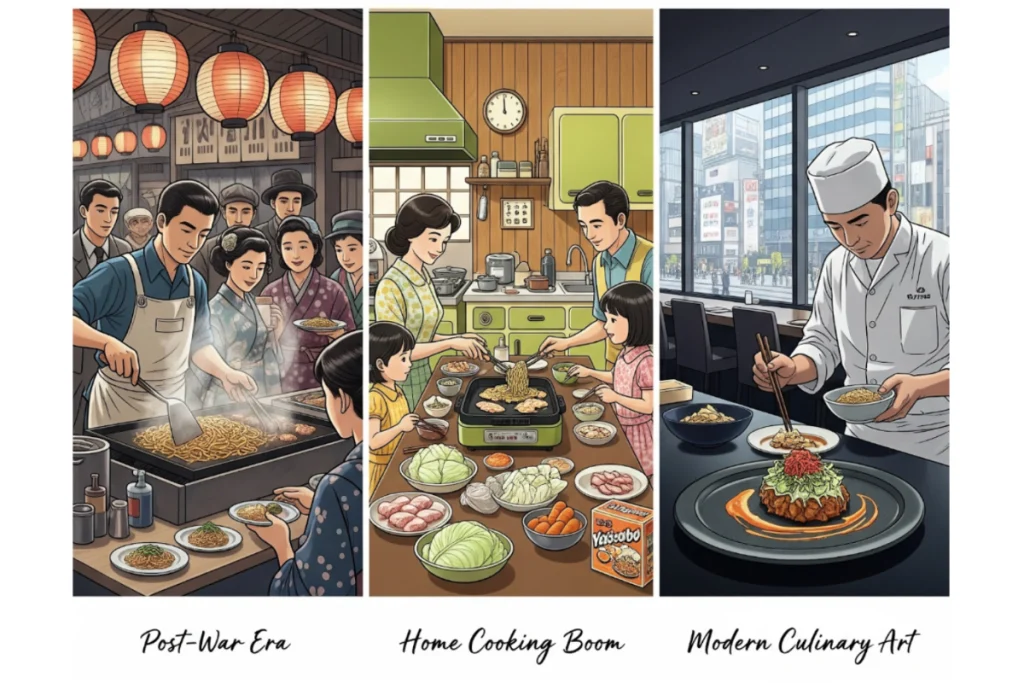
Understanding Soba vs. Yakisoba
To fully appreciate yakisoba, it’s helpful to clarify the difference between soba vs yakisoba.
| Feature | Soba Noodles | Yakisoba Noodles |
|---|---|---|
| Main Ingredient | Buckwheat flour | Wheat flour (Chinese-style noodles, chuuka men) |
| Texture | Firm, slightly chewy | Chewy, often springy |
| Preparation | Often served cold with dipping sauce, or in broth | Stir-fried with sauce, meat, and vegetables |
| Flavor Profile | Earthy, nutty | Savory, tangy, slightly sweet (from yakisoba sauce) |
This distinction is key to understanding the unique character of each noodle dish.
The Enduring Legacy of Yakisoba
The history of yakisoba noodles is a testament to culinary ingenuity and adaptation. From its humble beginnings as a post-war necessity to its current status as a global favorite, yakisoba continues to delight palates with its vibrant flavors and satisfying texture. Whether you’re enjoying the authentic Japanese street food yakisoba experience or preparing it yourself, you’re tasting a piece of rich Japanese culinary heritage. Fortune Noodles is proud to offer the highest quality noodles, so you can bring the delicious history of yakisoba noodles to your table.
In conclusion, the history of yakisoba is a fascinating journey from the bustling streets of post-war Japan to dinner tables across the globe.
It’s a testament to the power of simple ingredients, innovative spirit, and the universal love for delicious food. From its humble origins to its current status as a global phenomenon, the history of yakisoba continues to be written, one delicious bite at a time. The story of the history of yakisoba noodles is one of continuous evolution and enduring popularity.
FAQs about The History of Yakisoba
Q1: What is the primary origin of yakisoba in terms of its history?
A1: The primary origin of yakisoba in terms of its history can be traced back to post-World War II Japan. It emerged as an economical and filling meal during a period of food shortages and quickly gained popularity as street food.
Q2: Are yakisoba noodles the same as soba noodles in terms of their history and composition?
A2: No, despite the “soba” in its name, traditional yakisoba is made with chuuka men (Chinese-style wheat flour noodles), which are similar to ramen noodles. Soba noodles, on the other hand, are typically made from buckwheat flour. This distinction is a key part of the history of yakisoba‘s development.
Q3: How did Japanese street food contribute to the history of yakisoba’s popularity?
A3: The proliferation of yatai (food stalls) after WWII played a crucial role in popularizing Japanese street food yakisoba. These stalls offered quick, affordable, and delicious meals, making yakisoba a beloved and accessible dish, thus significantly shaping the history of yakisoba.
Q4: When did the history of yakisoba expand beyond Japan?
A4: In recent decades, the history of yakisoba noodles expanded beyond Japan’s borders as Japanese cuisine gained international acclaim. Today, yakisoba is found in restaurants and homes worldwide, showcasing its global appeal.
Q5: What are some key ingredients typically found in yakisoba, reflecting its history and evolution?
A5: Typically, yakisoba includes stir-fried wheat flour noodles, pork (or other protein), cabbage, carrots, onions, and is coated in a tangy, Worcestershire-sauce-based yakisoba sauce. These ingredients reflect its post-war origins and culinary evolution, a vital part of the history of yakisoba.
Q6: Why is understanding the history of yakisoba important for food enthusiasts?
A6: Understanding the history of yakisoba provides insight into its cultural significance, how it evolved from necessity into a beloved dish, and its journey from local street food to a global culinary staple. It enriches the appreciation of every bite.
Q7: How can I enjoy authentic yakisoba at home, honoring its history?
A7: You can recreate authentic yakisoba flavors at home with readily available ingredients. Many recipes are available online, allowing you to experience a taste of the history of yakisoba in your own kitchen. For truly delicious and convenient noodles, consider trying Fortune Noodles!—–Bring the Delicious History of Yakisoba to Your Table Tonight!
Ready to create your own chapter in the history of yakisoba? Experience the authentic taste and satisfying texture of this beloved Japanese dish in your own kitchen!
Click here to buy Fortune Noodles on Instacart and start your culinary adventure today. Fresh, flavorful, and easy to prepare, Fortune Noodles are the perfect foundation for your homemade yakisoba. Don’t wait – make your next meal a delicious journey through the history of yakisoba!
For more delicious recipes and insights into popular Japanese noodle dishes, visit our website or subscribe to the noodles club!
